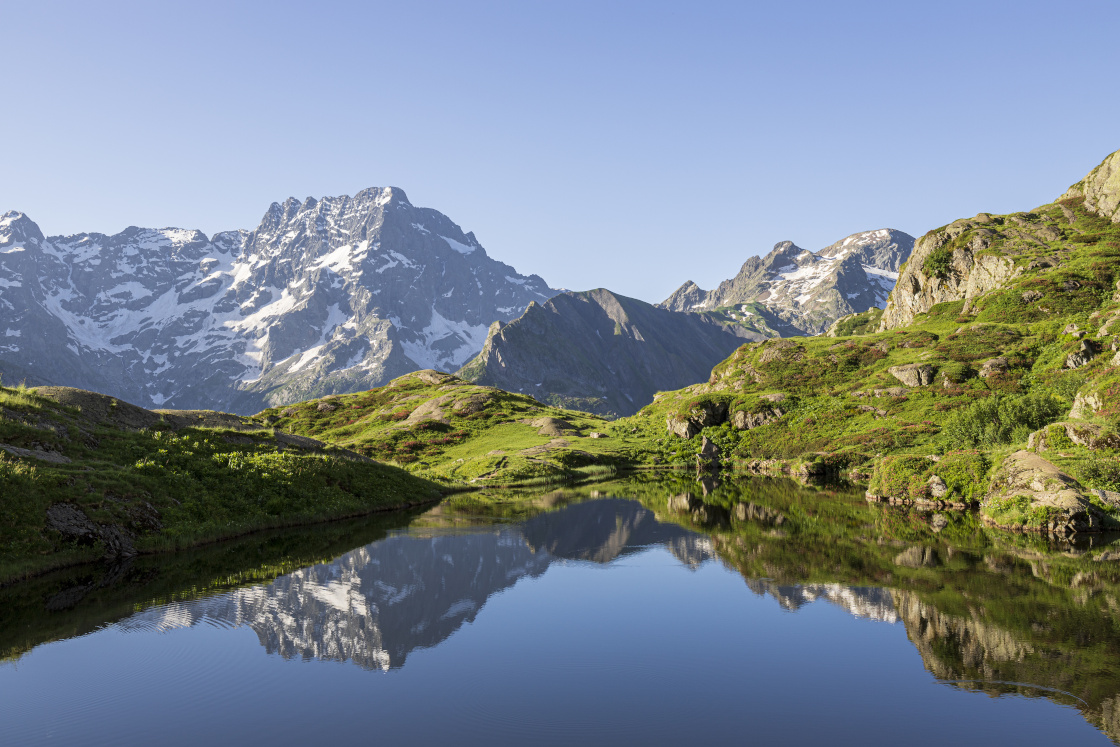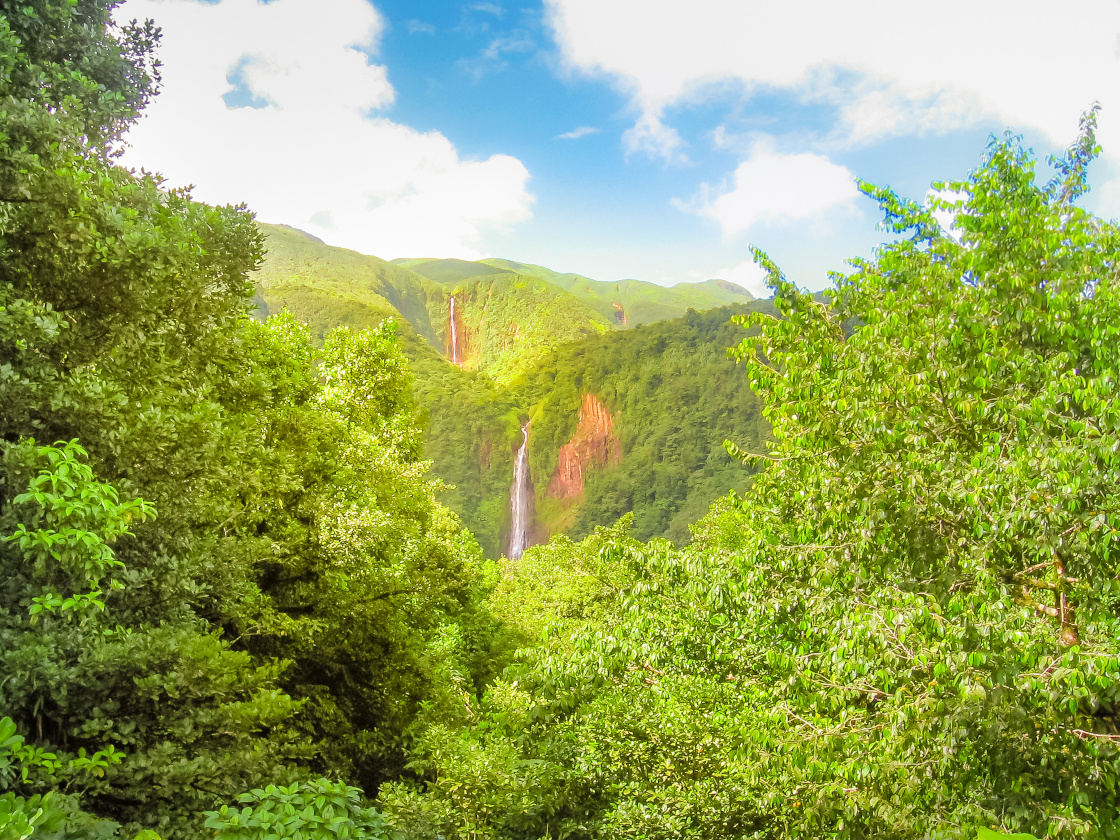They welcome 9 million visitors each year and represent nearly 10% of French mainland territory. With unspoilt nature and leisure activities that respect the environment, national parks embody a major part of France's identity. From the Pyrenees to the Alps, to Guiana and Guadeloupe, discover these 11 emblematic sites, among the most beautiful in the world.
France has 11 national parks, real 'monuments' of nature that are home to spectacular wildlife. They are recognised worldwide as exceptional territories and bring together diverse areas of land and sea.
The same objective brings them together: limiting pressures on the natural environment, promoting environmentally friendly behaviour and preserving the biodiversity and beauty of the park. National parks are governed by a charter, a real sustainable development project.
As free spaces open to all, they're ideal places to practise your favourite activities in a protected, awe-inspiring setting: hiking, swimming, diving, paragliding and winter sports... no limits to adventure!
11 national parks, of which 3 belong to French overseas territories
- Vanoise National Park (External link)
Created in 1963, this is the oldest of France's national parks. Located in Savoie, the Vanoise boasts mountain peaks of over 3,000 metres and valleys opening onto wide passes. Its geological richness and wildlife are remarkable. It is twinned with the Parco Nazionale Gran Paradiso, with which it shares a 14-kilometre border.
- Port-Cros National Park (External link)
Also created in 1963, Port-Cros is the oldest land and sea park in Europe. The islands of Porquerolles and Port-Cros, off Hyères, constitute its two hearts. It is based on an exceptional historical heritage, composed of Roman remains, wrecks and around 20 military forts. Enjoy admiring its diverse underwater and bird species.
- Pyrenees National Park (External link)
The third national park to have been created, in 1967, acts as a climate barrier between the Pyrenees and the Mediterranean and stretches over 100 km along the Franco-Spanish border. It's characterised by being very green, with an abundance of lakes and waterfalls. You may come across Iberian ibex, the ancestral species that disappeared for a century before being reintroduced in France in 2014.

© IMAREVA / Adobe Stock — The Sirac (3,441m) reflected on Lauzon lake in the Ecrins National Park (Hautes-Alpes)
-
Cévennes National Park (External link)
This is the largest French national park after the Amazonian Park in Guiana - and in mainland France, it's the only mid-mountain national park and the only one inhabited all year round. UNESCO designated it a Biosphere Reserve in 1985, and the 'agro-pastoral cultural landscapes of the Causses and Cévennes' were added to the World Heritage List in 2011. You can enjoy starry skies and particularly beautiful night-time landscapes here.
-
Ecrins National Park (External link)
Between the northern and southern Alps, the Ecrins has been recognised as a European High Mountain Park by the Council of Europe: it has 150 peaks of over 3,000m and some 10,000 hectares of glaciers! Its expanses of Alpine pastures and valleys with strong identities (Valgaudemar, Briançonnais, Champsaur) soften the wild beauty of the massif, where hiking is particularly popular.
-
Mercantour National Park (External link)
This park has an exceptional geographical location, on the border between France and Italy. From the Alps to the Mediterranean coast, it is home to peaks, mountain lakes, canyons and gorges, and hills planted with olive trees. A mosaic of different natural environments, it forms the Alpi Marittime Natural Park - the first European Park - with its Italian twin.

© bennymarty / Adobe Stock - At the heart of the Guadeloupe National Park, the Carbet Falls are among the most impressive waterfalls in the Lesser Antilles
-
Guadeloupe National Park (External link) (French only)
Founded on February 20, 1989, the Guadeloupe National Park was the first park created overseas, set up with the aim of protecting the Basse-Terre forest massif. At the heart of the Caribbean, it consists of rich and diverse ecosystems, ranging from the seabed and coral reefs to the summit of the Soufriere volcano, through to the rainforest. It's ideal for swimming, hiking and picnicking.
-
Amazonian Park of Guiana (External link)
Covering 40% of French Guiana and bordering the Brazilian National Park of Tumucumaque, this massif of tropical forest is act
-
Calanques National Park (External link)
The 10th French national park to be created, in 2012, the Calanques take pride of place at the heart of the Aix-Marseille-Provence metropolis - and this is Europe's only national park straddling land, sea and suburbs. It brings together vast coastlines carved out by creeks and one of the richest underwater canyons in the Mediterranean in terms of biodiversity. Its landscapes are emblematic of Mediterranean Provence.
-
National Forest Park (External link)
Situated between Champagne and Burgundy, this is the newest national park in France's crown, created on November 7, 2019. It's dedicated to the enhancement of the lowland deciduous forest, representative of the limestone plateaux of the northeast quarter of France. 80% of the forests that make up this park were already present at the time of the French Revolution. With its enormous water tower, the National Forest Park also plays a major role in the preservation of our most precious commodity.
